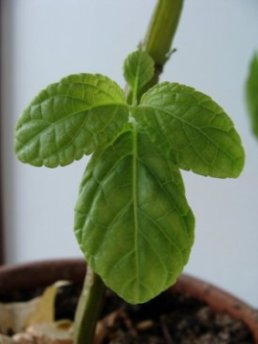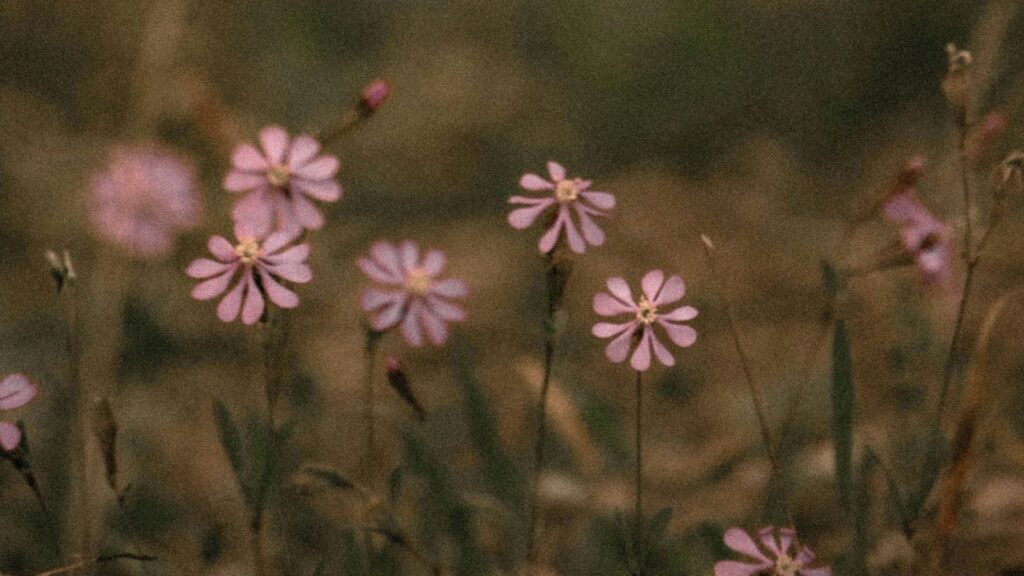This article originally appeared in Journeybook: Travels on the Frontiers of Consciousness, a recently released anthology of altered states, essays, history and manifesto for psychedelic culture in the 21st century. It covers the modern usage of sacramental plants and offers insights into traditional and contemporary shamanism, as well as analysis of the current state of global psychedelic culture and its place in a sustainable future.
Phil’s sitting on a bed in a crashpad somewhere in the UK about to smoke Salvia Divinorum, an ancient Mazatec hallucinogenic herb. He’s a gangly lad in his 20s with shoulder-length dark hair, dressed in blue jeans and a dark t-shirt. As his friend hands him the bong he bites his lip in anticipation of this strange new drug he’s about to be filmed taking, which will later be posted on YouTube and broadcast to the world.
The background music is “Over The Line” by The Crystal Method from the Tweekend album, a chilled favourite of the salvia set. Phil’s friend lights the bong — it’s a 5x dose, not a massive hit but a decent sized pinch. Smoke curls up the chamber. Phil coughs, quickly holds his nose to stop any smoke escaping, then leans back against the wall as the effects start to come on. Within seconds he’s in another world. A smile breaks across his face and he keeps reaching forward like he’s grasping for something interdimensionally, trying to cut and open a door in the air with his hands.
“Ah, now I get it,” he says, his speech slurred and his body motor control impaired. He begins fidgeting around on the bed, gesticulating erratically. “Whooaww, whooaahhh” he says, over and over, waving his arms above his head like he’s at a rock concert. It’d be tragic if it wasn’t so funny.
And Phil’s not alone: middle class white stoners in the suburbs; boys in the hood; party crews in Beverly Hills; drug geeks in their bedrooms. A new wave of psychedelic trippers are smoking salvia and posting their experiences on YouTube in a social networking phenomenon that’s flustering parents and lawmakers around the world, and exposing the ritual of drug taking as never before. Now even the sacred is commercial, just another content package for a hungry world.
Author D.M. Turner states in his book, Salvinorin — The Psychedelic Essence of Salvia Divinorum that the plant’s effects may include: “Uncontrollable laughter, past memories, such as revisiting places from childhood, sensations of motion, or being pulled or twisted by forces; visions of membranes, films and various two-dimensional surfaces; merging with or becoming objects and overlapping realities, such as the perception of being in several locations at once.” Is there any wonder bored kids across the Western world are turning to it in droves?
This isn’t the first time users have broadcast their attempts to break open their head and explore higher consciousness. There were the Romantic poets — Byron, Shelley, Keats et al, whose indulgences in laudanum made for some florid 19th century poetry. Thomas de Quincey similarly bared his altered state in Confessions of an English Opium Eater. And the 20th century was synonymous with writers and the drugs they explored: Leary and Kesey (LSD); Burroughs and Irving Welsh (heroin); Hunter S. Thomson (speed, mescaline and whatever he could get his hands on), to name just a few. But this time it’s different — now the internet allows the masses to share video footage of their trips with a global public — so you don’t have to read about it, you can see it, virtually in real-time.
Stevo looks a little like the guy from Harry Potter, caught in the headlights of a UFO. “How do you feel bro?” his friend asks, giggling at his utterly bewildered state. Salvia divinorum, also known as “Diviner’s Sage,” has been called “the most powerful hallucinogenic known to mankind” by enthusiasts on the net. How do you think he feels on salvia with a camera phone in his face? Stevo’s confused, disorientated, and he needs help. He’s been thrust into a completely alien headspace and all his friend here can do is assault him with his camera phone, laughing his ass off.
“Where… what’s going to happen?” Stevo asks, like a small child.
“Its just a drug, it’s that salvia shit we just picked up. C’mon bro. It’s going to go away… Let me try this shit out bro… Is it sick or what?”
Totally sick, bro. Because in the post-Jackass, reality-TV generation nothing is sacred. Not the person’s individual trip, nor the drug they use to trip on. The crushing irony is that salvia divinorum used to be one of the most sacred of plant allies to the Mazatec Indians of Mexico, who preserved its secret from the invading Spanish conquistadors for hundreds of years. It was whispered in secret tones and kept to the inner shamanic circles until the early-20th century. The Mazatecs still use it to see shamanic visions for divination and to heal, but by the late-1990s salvia had become available on the internet in increasingly concentrated extracts up to 40 times as strong as the natural strength leaf itself — and that’s where the party started.
Salvia users on YouTube brag about the concentration and potency of the plant, saying these are extremely super-powerful psychoactives that can catapult you out of your body or melt you into the furniture, becoming the very molecules of the things around you. One YouTube salvia poster called “hut141” remembers the first time he tripped out on salvia: “It was 20x extract. It was like reality became a landscape of some new kind of 3D. Time and space were both warped. Half of my entity was infinitely empty and the other infinitely full,” he wrote in the YouTube comments section.
The journey of the soul can now be bookmarked, but as the YouTube phenomenon spreads it’s also gaining mainstream attention – and begrudging respect. Last year even the prestigious UK magazine New Scientist published a scientific account of a researcher’s salvia trip: “…The salvia took me on a consciousness-expanding journey unlike any other I have ever experienced. My body felt disconnected from ‘me’ and objects and people appeared cartoonish, surreal and marvellous,” reported Vince Gaia. Which is a polite way of saying, “you trip HARD AS FUCK for like 5 minutes”, as a salvia video from PartyNetwork.tv states. And amazingly it’s legal — for now.
It’s a typical frat party scenario somewhere in middle America — it looks like an amateur porn video in the making, except the blonde girl on the couch is going down on an alien psychedelic from some Mexican plant. “It doesn’t matter the size hit you get, you gotta hold it in all the way,” a guy says to her as the blonde’s salvia virginity is shattered forever.
“Are you fucking serious???” she laughs uncontrollably. But is she talking about the effects of the drug or her friends trying to make her move like a lab rat across vast dimensional spaces while being filmed on drugs? “I love that…” she says, coming down. “Oh my God, did it fuck me up… Let’s do it again!”
Even the trippers can’t believe how this one slipped through the cultural firewall. “How is this legal, I don’t understand it?” the guy in the PartyNetwork.tv clip says. Yet the wildfire popularity of salvia — and the adverse publicity from the YouTube salvia videos have seen it banned on a local level in over a dozen US states, with the predictable backlash raising the moral majority into a legislative frenzy.
In April 2008 Kenneth Rau, a 46-year-old bottling plant worker with an interest in herbalism, altered states, religion and spirituality, was arrested for possession of a few ounces of salvia that he had bought off eBay. Unbeknownst to Mr Lau, his home state of North Dakota had criminalised salvia back in August 2007, riding on a legislative shockwave in the wake of the YouTube videos. Zealous prosecutors dubbed his stash as possession with intent to sell, despite the fact the amount was the minimum quantity available from eBay and only cost US $32 — hardly a lucrative resell market. Worse still, Google pulled up ads for salvia on the website of a local TV station that reported on Lau’s arrest, as if to testify to the easy availability of the mint.
Australia banned salvia in 2002 but it’s still legal to varying degrees in the UK, Canada, parts of Europe and elsewhere in the world. This is because despite its powerful psychedelic effects, salvia’s chemical properties are significantly different under analogue drug acts from that of other psychoactive drugs like LSD — and the plant, part of the mint family, can also be cultivated horticulturally. But despite long use in its indigenous setting, and an understanding that salvia is non-toxic and not addictive, conservative commentators have responded by calling the plant a “dangerous threat to society.”
In a June, 2007 interview with the San Francisco Chronicle, however, salvia-expert Daniel Siebert, who led a team that helped identify the plant’s psychoactive mechanism and popularised the drug in the West, admitted: “Those videos are certainly not going to help the situation. They make salvia look like some horrible drug that makes people nuts and dangerous […] The sad thing is it creates this public image where people don’t realize there are sensible ways to use something like this.”
And that’s the real problem, not that people are using plant entheogens to connect to altered states, nor this new spin of uploading their trips to the net. The real issue is that the West lacks the guidance of indigenous elders to show how to use these plant tools correctly. And while the potential for responsible use is there — it doesn’t make great video. Because no matter how much content it hosts, even YouTube can’t capture the Divine.
Image by oceandesetoiles, courtesy of Creative Commons license.















